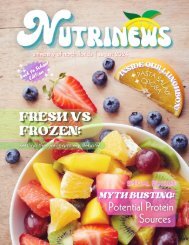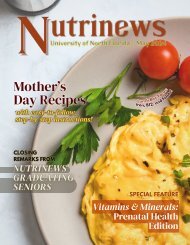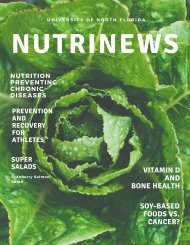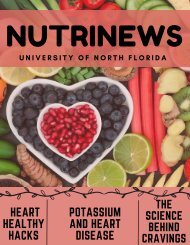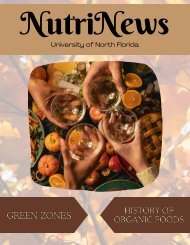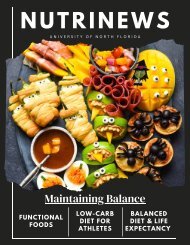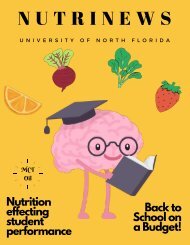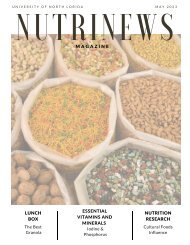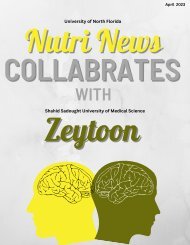April Issue
Hello Ospreys! This April issue features exciting updates on the 2021 spring graduation ceremony! We also highlight cauliflower in our Shopping in Season segment, Easy Ways to Move More and Sit Less and our Student Spotlight is on Mami Okada, who is a senior in the nutrition program. Happy reading and good luck with the rest of the semester!
Hello Ospreys!
This April issue features exciting updates on the 2021 spring graduation ceremony! We also highlight cauliflower in our Shopping in Season segment, Easy Ways to Move More and Sit Less and our Student Spotlight is on Mami Okada, who is a senior in the nutrition program.
Happy reading and good luck with the rest of the semester!
You also want an ePaper? Increase the reach of your titles
YUMPU automatically turns print PDFs into web optimized ePapers that Google loves.
Intutive Eating<br />
By: Melissa Brennan<br />
Intuitive eating is a practice gaining popularity to help individuals find food<br />
freedom. Intuitive eating is characterized by eating in response to actual<br />
physiological hunger and satiety cues, rather than eating due to emotional cues.<br />
Another hallmark approach to this practice is not considering any foods offlimits,<br />
in order to further pursue food freedom. The current literature supports<br />
an inverse association between Intuitive eating (IE) and body mass index (BMI).<br />
Camilleri et al. set out to establish the association between food intake and<br />
intuitive eating in a large adult population. Their study was a web-based,<br />
prospective observational cohort that was launched in May 2009 in France with a<br />
10 year follow up. This study aimed to look at the relationship between nutrition<br />
and chronic disease risk as well as dietary behaviors and nutritional status.<br />
Participants were included in the study if they were 18 years or older, with 9,581<br />
men and 31,955 women participating. Intuitive eating (IE) was assessed in<br />
individuals by using the French version of the Intuitive Eating Scale-2, which is a<br />
valid model to assess IE status. At the start of the study, participants filled out a set<br />
of web-based questionaries that assessed dietary intake, physical activity,<br />
anthropometric data, lifestyle, socioeconomic conditions, and health status. The<br />
follow up protocol consisted of the same set of web-based questionaries<br />
administered every year for ten years. Participants reported food intake by filling<br />
out self-reported 24-hour dietary recalls. The IE Scale-2 gathered data on physical<br />
reasons to eat, reliance on hunger and satiety cues, and unconditioned permission<br />
to eat, which were all compiled with food intake data from the recalls to be<br />
assessed.<br />
4






